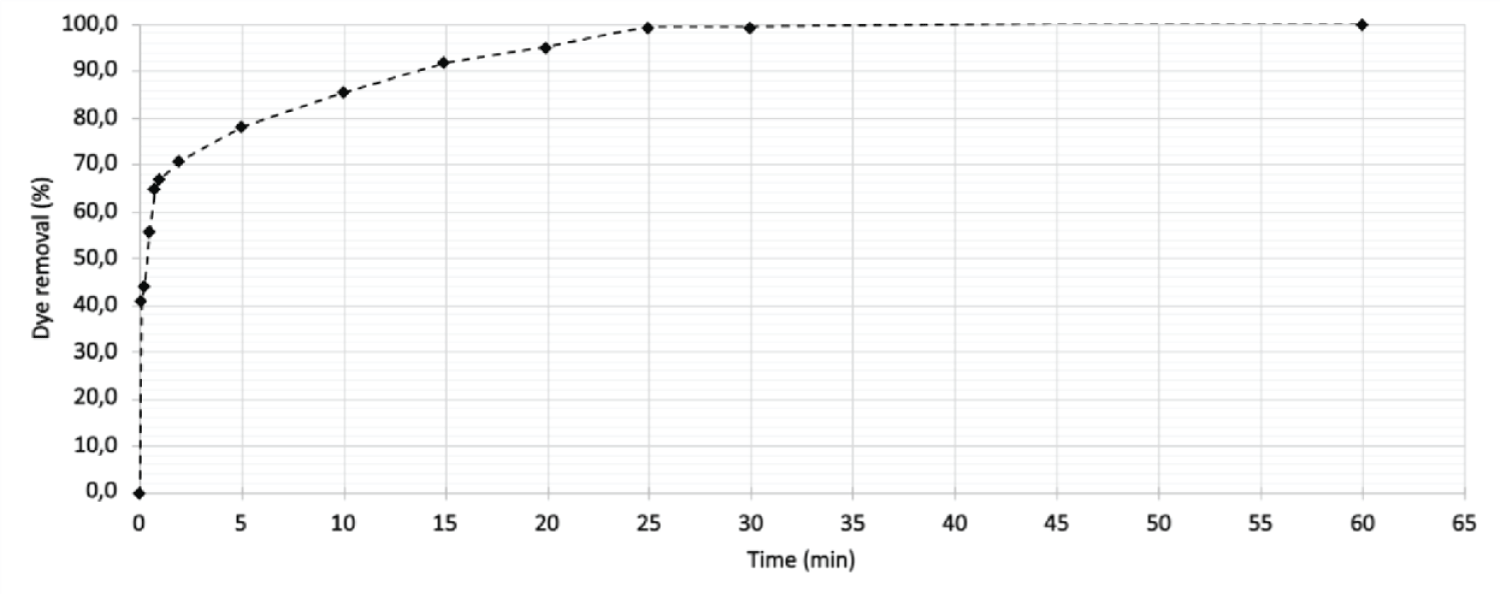要約
The textile sector has great relevance in the Brazilian socioeconomic context, generating large volumes of effluents of varied composition, with dyes being one of the most worrying contaminants due to their characteristics of high solubility, harmfulness and low degradability. Among them the Reafix Yellow B8G (ARB8G) dye has an azo nature, harmful to organisms in the aquatic environment. According to Brazilian laws, it is recommended to dispose of waste through incineration or landfill, due to its resistance to biodegradation. One of the methods for treating effluents is the adsorption of contaminants using materials with adsorption capacity, such as residue from the burning of biomass in boilers (ash). The general objective of this work was to evaluate the adsorption kinetics by contact time of the ARB8G dye by boiler ash. The test was based on mixing the adsorbent material with a dye solution at 75 mg.L-1, at constant temperature and stirring at different time intervals. To quantify the amount of adsorbed dye, the UV-Vis spectrometry method was used. The kinetic test indicated an equilibrium time of 30 minutes, with 100% removal under the tested conditions. From this result and considering that boiler residue is an underutilized and low-cost material, it is concluded that this substance has significant potential to be applied as an alternative material for the treatment of effluents containing dyes.








